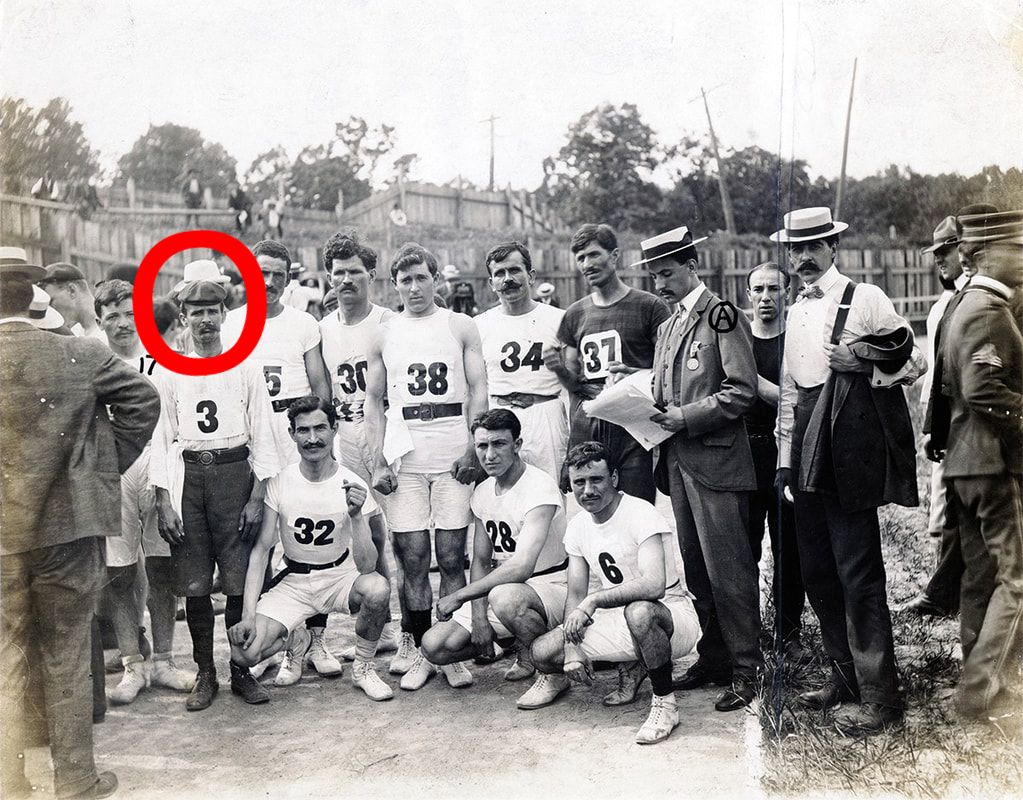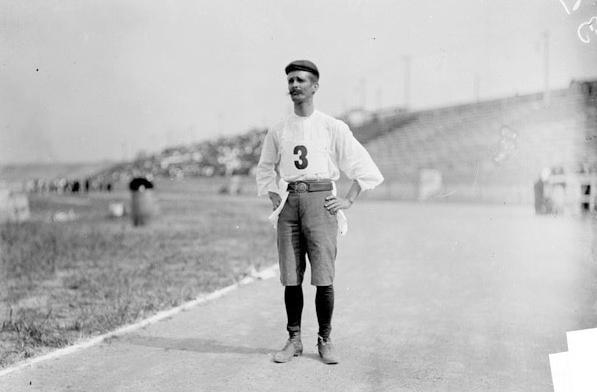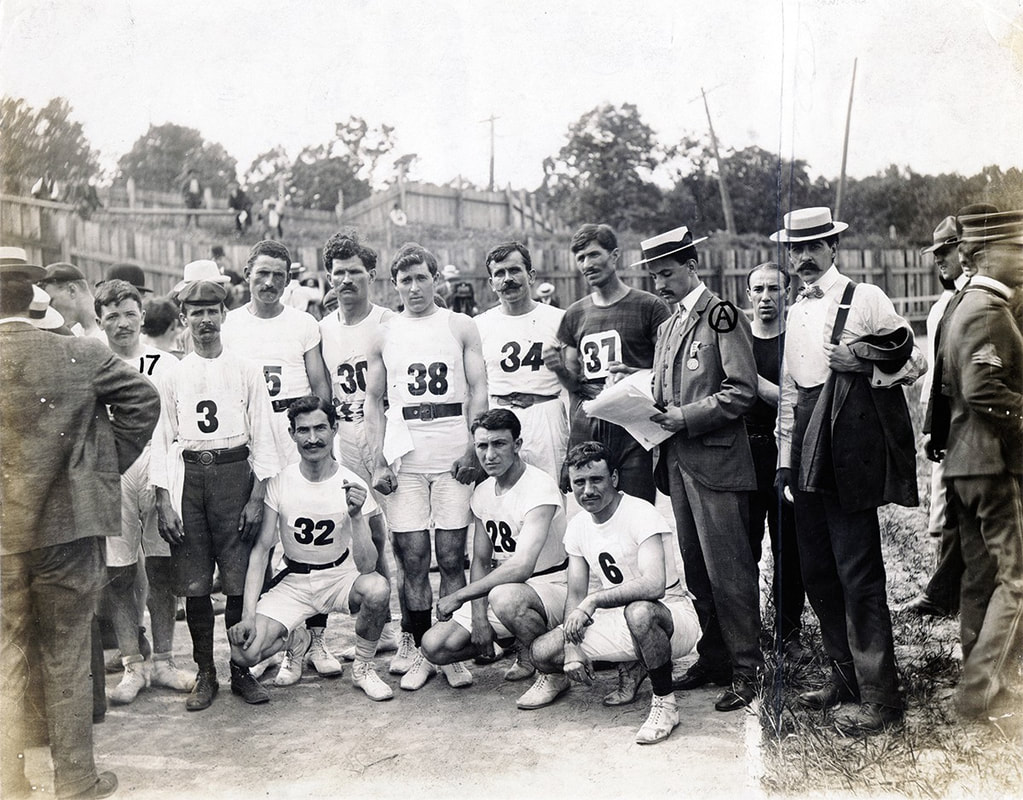|
Yesterday in our Solar Flow class, I shared the incredible tale of Félix de la Caridad Carvajal y Soto. This story served as a springboard for us to explore the profound lessons of Dharma and ignite our journey towards mastering the one-legged crow pose (an arm balance that resembles a running man, doesn't it?). I hold this story close to my heart as I strive to live a purposeful life. It's a truly inspiring human tale, one that many of us could use right now. Today, I extend an invitation to you to take a moment and sit back, grab a cup of tea and delve into Felix's extraordinary journey. He grew up in the midst of war, possessed nothing more than the clothes on his back, and yet, he found a way to, quite literally, chase his dreams.... (click below to read more) Disclaimer: I'm not a historian. The blog I've crafted is a culmination of my preferred podcasts, articles, and news snippets. It's essential to note that there are multiple conflicting and diverse accounts, and I'm simply retelling my personal favorites. Born to RunIt’s the turn of the 20th century. A steamship with the Spanish flag docks in Havana, Cuba. Among the passengers, disembarks a disheveled man with a twirling mustache, mischievous smile and an unforgettable story to tell. His name was Félix de la Caridad Carvajal y Soto and what made his arrival so astonishing was that this man, Cuba’s first olympic marathoner, had been declared dead for years... But let's rewind the tape a bit. Félix Carvajal's life was a vibrant manifestation and pursuit of his true calling. He fell in love with running from a young age. At age of 14, he dared to challenge Havana's best athletic runner to an endurance race that would push the boundaries of human stamina. They ran tirelessly, from dawn until dusk, and then some more. His competitors eventually surrendered, utterly exhausted, but Félix continued running for an additional TWO HOURS. As he grew up, he took a job as a federal mail courier during the Cuban War of Independence. Being this sort of mail courier was a dangerous job as sensitive letters had to be sprinted from door to door. He ran over 30 miles per day. Needless to day, he had an unyielding desire to run. Fast forward to 1904, and Félix learned of the upcoming Olympics hosted by the U.S.A. In his signature mustache and weathered attire, the lanky, thin-armed Carvajal marched into the mayor's office with an wild proclamation—he wants to participate in the Olympic marathon, and he is seeking the mayor's sponsorship. The mayor's response was far from what Félix expected; it was an eruption of laughter, dismissing Carvajal's request as preposterous But this was Félix Carvajal, a man who knew only one way to respond to adversity: he ran. And run he did, tirelessly circling the Havana’s City Hall, a mere 5-foot-3-inch and 120-pound dynamo. Lap after lap, he pounded the pavement, passing by the mayor's window again and again. A growing crowd gathered to witness the sweat-soaked runner's relentless determination as he tirelessly plied the park, lap after lap, big grin on his face. By the end of the workday, the mayor emerged to find a throng of exited onlookers. Once more, Carvajal zipped past and the crowd cheered. The mayor retreated to his office, realizing that this tenacious young man was not to be taken lightly. With a sense of determination and a hint of humility, he penned an order and stepped back outside to confront Carvajal. "Here is an order for your journey to St. Louis and back," he declared. "Now, go and give it your absolute best." And give it his best, he did. Against all odds, Félix Carvajal found himself on a steamboat bound for New Orleans, where his extraordinary journey was poised to take flight. However, once Felix landed in New Orleans, he was immediately seduced by the fun and mischief the town had to offer. Rumor has it that he spent the little money he had partying, gambling and dancing. Which brought him to his next predicament—no funds nor resources to make the journey to Missouri. Undeterred, he once again resorted to the power of his own two feet. When he showed up for the 1904 Olympic marathon, he was a comedic picture of exhaustion, a result of his insane 670-mile run-walk-hitchhike odyssey. He stood at the starting line half-starved in a dirt-stained, sweat-soaked white button-down shirt, full trousers, handmade work boots and wool cap. With his distinctive, broomstick mustache, Carvajal cut a pitiable yet adorably striking figure. The temperature soared to a sweltering 94 degrees that day, and Felix's running attire raised eyebrows among his fellow racers. Concerned about overheating, a spectator even took it upon themselves to trim Felix’s trousers at the legs. Felix discretely slid the fabric in his pockets, knowing that he'd have to sew them back later. Those trousers were his only pair, after all. Despite defying the oppressive heat, Felix couldn't defy the allure of the crowd. His charismatic nature drew him to charm the onlookers, where he indulged in a flirting with the ladies, putting on a show for the enthralled kids and chatting the onlookers. It's rumored that he squandered over an hour of race time to socializing with the spectators. It's also crucial to remember that Felix had just completed a punishing 670-mile trek and had gone days without food. His hunger eventually got the better of him, leading him to climb over a fence and venture into an apple orchard, where he helped himself to what he later discovered were rotten apples. They left him with agonizing stomach cramps, eventually forcing him to take an impromptu nap in a nearby field. Despite his sociable detours, in spite of the unanticipated siesta, and even considering that this race goes down in history as one of the most grueling and bizarre marathons in Olympic history (a tale for another time), Felix astoundingly managed to secure a fourth-place finish! It's widely believed that, had he not been waylaid by these diversions, victory would have been his by a staggering margin.
His time in the U.S. saw his popularity soar as he continued to run more races, charming spectators, and winning over journalists. He even became a favorite prospect for the 1906 Intercalated Games, another Olympic-style event, but curiously, he never reached Athens despite purchasing a ticket and boarding a ship. Speculation swirled about his fate, with rumors of theft and even murder. His obituary even made its way into Cuban newspapers. But Félix Carvajal had one more surprise up his sleeve. Years later, he returned to Havana with nothing more than the clothes on his back and that iconic mustache, proclaiming himself alive and well. As it turned out, Félix had confused the dates of the Athens Marathon, missing it by just one day. So, he decided to stay and run away. He spent years racing and running throughout Europe, amassing over 50 medals during this time. Eventually, he longed for his homeland of Cuba and used every penny he had earned to make the journey back. Which brings us full circle. Felix is home and his legend continues to grow. He was featured in The Evening World News, announcing that upon his return to Cuba, he ran the length of the country and back twice, akin to a Forrest Gump ahead of his time. It was noted that Carvajal spoke not English, French, or even Spanish but instead a Cuban slang. Reports also had it that he visited friends in New York and was arrested for racing train cars, leading to his detention at Bellevue as an insanity suspect. When Bellevue authorities tracked down his friends, they asked “How long has this man been insane?” The response was, "He isn't crazy, he's a runner." Profiles and newspaper clippings provided glimpses into his life, but it seemed that Carvajal could never fully escape poverty. He was born with almost nothing, arrived at races with almost nothing, and ultimately passed away with almost nothing. The few occasions he had enough funds to travel, he seized them and explored more of the world than most people will ever see. And he always did it running. The remarkable tale of Félix Carvajal is one of my favorite underdog stories. His adventurous life is a beautiful tale about what it’s like to live your Dharma Life. Dharma represents one of the four Purusharthas, or life's goals in yoga philosophy, emphasizing the pursuit of a heartfelt purpose. As yogis, we seek to live a “Dharma Life”. This is a life that is fueled with meaning, motivated by growth and illuminated through truth. The Purusharthas are the inherent values of every single human life. They are considered the blueprint for human fulfillment. Working with them helps you create a satisfyingly balanced, meaningful life at the deepest and most holistic level. 1.Artha (wealth/value), 2.Kama (happiness), 3.Dharma (purpose), and 4.Moksha (liberation/harmony) Felix’s life of passion was a testament to his unwavering determination, a quality deeply associated with the third Purushartha, dharma. Despite facing poverty and hardships, he used his talent for running to see the world, connect with people and partake in numerous events. His journey was punctuated by moments of fame while never truly escaping the shackles of poverty- but that really depends on how you define wealth. Félix Carvajal's story, with its astonishing twists and turns, serves as a reminder of the importance of following one's passion and allowing it to become a deeper purpose in life. It may not always lead to riches, but the fulfillment that comes from pursuing one's dharma is a treasure in itself. Carvajal's legacy lives on as an enduring symbol of determination and the pursuit of one's true calling.
0 Comments
Leave a Reply. |
AuthorWe really like to hear ourselves talk. Archives
July 2024
Categories |
|
Questions about your first class?
Click here. |
FIND USWe are located at:
The Commonwealth Landing 1082 Davol Street Fall River, MA Phone: +1 323 800 8599 (text only) Apple maps is still updating their systems. We recommend putting our actual address into navigation, otherwise they may bring you to our former location. |






 RSS Feed
RSS Feed
